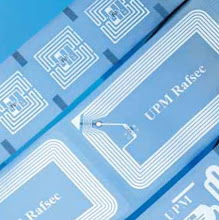你最希望哪些電子工程領域的技術問題能在2010年獲得解決?耶誕節就快到了,把願望清單列出來吧!以下是由EETimes美國版編輯所提出的、七個他們最希望能在明年看到進展之技術項目,大至半導體製程、小至消費性電子裝置相關…那你呢?歡迎加入討論。
願望一:新一代微影技術
過去幾年來,半導體產業尋找下一代微影技術的工作似乎停滯不前,其中超紫外光微影(Extreme ultraviolet,EUV)看來頗具潛力,但仍距離主流市場好一段距離。在明年已排定的一些技術研討會上,EUV預料還會是焦點議題,可惜內容恐怕了無新意。
因此EETimes主跑半導體技術的編輯Mark Lapedus所提出的願望,是在2010年能看到EUV技術有所進展,或者各家業者還是放棄它另覓更好的技術吧!
不過現在看來,半導體產業可能難以承受放棄EUV的損失;畢竟在相關技術的研發上,IC廠商們已經投入了數百萬美元。EUV的支持者原本認為,該技術將可以準備好支援65奈米製程,卻根本來不及;現在業界期望在16奈米製程時代讓EUV就緒,時間點是2015年。
但仍有人質疑EUV是否能夠成為主流技術,或者至少能夠在一些特定領域派上用場?這些問題的答案到目前為止都不明朗。多年來,EUV在電力來源、光阻、零缺陷光罩(defect-free masks)等方面的問題都尚未解決,最大的一個障礙則是缺乏量測工具。
雖然Intel與Sematech等半導體製造大廠,都呼籲業界投入更多資金進行EUV檢測工具的研發,設備供應商們卻因為景氣寒冬而面臨口袋空空的窘境;包括應材(Applied)、KLA-Tencor等設備大廠,甚至已經對EUV的前景感到悲觀。
願望二:丟掉醜醜的電子裝置電源線
市面上有很多迷人的電子裝置,但討厭的是它們還是無法脫離那些充電用電源線──不但長得不好看、互不相容,而且總是糾纏在一起;更煩人的是,當你需要的時候,往往就是會找不到那些充電線到底放在哪裡。
主跑消費性電子的EETimes編輯Dylan McGrath,最大的願望就是在2010年「不插電」,他想要看到無線充電技術能夠讓所有電子裝置使用者大解放!
無線充電技術已經有多年的發展歷史,也開始準備收穫;新型智慧手機Palm Pre專用的Touchstone充電座,就是首款手機用的無線充電裝置,可惜只能讓Palm Pre獨享。另外在零售3C賣場也可以買到定價100美元以下的無線充電座,但有些裝置可能不相容。
目前市面上至少有五種不同的無線充電技術,且完全缺乏標準,因此未來可能會出現像今天的手機充電器那樣,各家廠牌、各種裝置,各有不同適用的無線充電座之情況。而包括Wireless Power Consortium、CEA等組織,都打算推動無線充電技術的標準化工作。
無線充電技術的標準化是可以預見的,但標準的百家爭鳴恐怕也難以避免;電子工程師們是否有一天能讓我們家裡的電子裝置使用標準化的無線充電座,讓來自不同廠牌的無線充電系統都能相容呢?祈禱吧!
願望三:智慧電網快點實現
對美國的電子產業界來說,智慧電網(smart grid)無疑將是2010年的一大焦點;未來包括冰箱、洗衣機等家電設備,甚至電動車,都將連上智慧電網,因此最需要的就是各種電子裝置與智慧電網之間的連結標準。
除了標準,智慧電網領域的工程師們,還得思考如何將太陽能、風力發電等在生能源也加進智慧電網的範圍中;他們得考量該如何將以上再生能源裝置在白天與刮風的日子所產生的電力,儲存至夜晚與平靜無風時使用,這將牽涉電池等其他相關技術。
無論如何,EETimes編輯Rick Merritt認為,若能在2010年看到可被廣泛採用的電力線網路統一標準,對智慧電網技術來說將是個最好的開始。
願望四:再創人類太空探險盛世
對大多數美國工程師來說,阿波羅號太空梭首次登陸月球的輝煌成就,是激勵他們投入科技領域的重要原因之一。最近美國官方也著手重新整頓相關太空探險計畫,希望能再次創造人類登月一般的科學成就、並衍生更多的技術創新。
美國太空總署(NASA)近來向工程科系學生徵求創造月球新生態系統的技術提案,包括環境控制系統、發電裝置,甚至製造可呼吸空氣的設備;此外也有科學家提出了捨棄載人太空航行、改採遠端遙控方式進行火星等其他太陽系行星探險任務的想法。
無論如何,EETimes編輯George Leopold認為,全球的工程師社群應該共同合作探索太陽系;因為人類登上了月球,我們才能回頭看到珍貴又需要保護的地球。藉由對宇宙其他星球的探險,將可大幅開拓人類的視野。
願望五:更簡單易用的電子裝置介面
Everyone in the electronics industry pays lip service to the importance of the user interface, but on most consumer devices the UI looks more like an afterthought.
I can't tell you how often I've been stumped by incomprehensible messages that pop up on a device's screen. I assume the device wants me to do something for it, but there aren't enough clues to know what that might be. So I sit there, looking into abyss, and the abyss looking back, abysmally.
This issue is growing worse as more devices from TVs to washing machines connect to the Net. I fear the result will be more messages on more screens, offering me more clues to more choices for what I can do to make life better for all those interconnected devices that seem to have become my new dependents.
Systems are smaller and more powerful, but not always easier to use
As a technology reporter, I understand the UIs on most consumer devices aren't as elegant as that of Apple's iPhone. Not every consumer device comes with enough processing power or memory to do what an iPhone can do. Not every manufacturer has access to font or rendering technology, essential to create the clean and sophisticated look many consumers have come to expect. As fragmented as the embedded system market is, there is no single, one-size-fits-all simple UI a manufacturer can deploy for every product.
Help may be on its way. Monotype Imaging, a provider of text rendering technology with access to more than 10,000 typefaces, recently announced its acquisition of Planetweb, a developer of embedded UI software. Together, they will offer UIs that can be ported to different devices, including those with limited computing power and memory.
Such collaborations could make interfaces are more readable, but not necessarily more intelligent. I live in fear of hearing my devices, one by one, look me in the eye and say, "I'm sorry, Dave. I can't do that for you." (Junko Yoshida)
6,7. Better keyboards, displays
Users need something better than keyboards and displays to interact with the burgeoning world of mobile devices.
The Blackberry has given us "all thumbs computing" as the interface for mobile e-mail. The iPhone threw out the mini keyboard to give us the touch-face display that lets a user issue accidental commands when his cheek hits the screen as he takes a call.
Now Synaptics and others are using the embedded accelerometers in cellphones as a way to issue commands by tilting devices. We cringe to think about the convolutions of accidental commands this may create.
Voice interfaces could solve such problems, notes Editor Nic Mokhoff, especially for the growing population of older users who have to squint to read the characters on their mobile screens. But engineers need to improve today's voice interface to make them more useful. "Make all GPS systems adhere to a single voice recognition algorithm that gives answers to location, traffic and destination queries via user-friendly speaker recognition," Mokhoff said.
Anyone who has made routine use of 411 or Google's free telephone information service (at 800.466.4411) knows voice interfaces are still buggy despite being widely deployed. Can you say, "start over?"
We still need displays, but we long for the foldable display technologies EE Times editors such as Mokhoff have been writing about for more than a decade. The iPhone sports a nice looking mobile display, but the return to the large candy bar form factor has made this device impossible to carry with any grace for a generation raised on blue jeans. (Rick Merritt)
資料來源: eetTaiwan 2009/12/23
參考原文: EETimes
原文網址: http://www.eetimes.com/showArticle.jhtml?articleID=222002748&pgno=1
聚焦國內外無線射頻辨識(RFID)技術發展與創新應用,並分享各種新興科技、未來趨勢以及管理議題
搜尋此網誌
網站/網誌連結推薦:
網誌存檔
-
▼
2009
(1357)
-
▼
12月
(192)
- 智慧電源插座 值兩百億美元
- 逢甲智慧教室 自動感應點名
- 師大推動RFID校園e化
- 日本九州「Hayaka」-守護學童安全
- 未來五大科技 改變城市生活
- 借書、列印、搭車 台師大e卡通
- 藏身於插座裡的延長線
- 家裡插座也要有USB
- 中國兩項食品安全追溯國標通過審定
- 雲端運算對台灣衝擊大過商機!
- H1N1疫苗技術、智慧型後視鏡研發獲經濟部補助
- 加密全世界GSM手機的密碼被破解了
- 物聯網:技術標準與商業模式仍待突破
- 台師大推e卡 1卡在手校園通
- 自動點名 不能再隨便蹺課
- 全國綠色校園表率 逢甲啟用智慧教室節能
- 正文、北美On-Ramp攜手,跨入智慧電網之無線傳輸系統
- 僑光科大 產業升級推手
- 中華電利用NFC+RFID技術先進導覽手機
- 掀搶辦潮 晶片護照緩漲立院強勢要求 延明年3月1日實施
- 盤點2009年IT產業熱點:最砸錢的業務3G
- 晶彩科總經理蔡顯章請辭
- 消費者最愛的零售店是沃爾瑪
- 蜂鳥機器人 日本研發成功
- 台灣野生水鹿研究 裝設GPS項圈追蹤
- 外交部:明年3月 護照規費1600元
- 射頻識別技術具報警等功能 保障世博區域車駕安全
- 輔助小型企業創新 經濟部通過40項研發計畫
- 換發晶片護照想省錢最後3天
- GS1 China、HK、Taiwan在台大會串 共為兩岸三地RFID市場努力
- 精聯實施庫藏股2000張;Q4業績攀全年高峰
- 崑山科大圖書館獲圖資界「熱心服務」肯定
- RFID趨勢盃 挖掘千億商機
- 聯明 決議發行3億無擔保公司債 成立聯明付易公司
- 「針」不可失 中正資管系學生發明RFID科技針灸再也不漏針
- 運用RFID 針灸不怕漏針
- 中移動初定物聯網目標:明年發展200萬用戶
- 高縣/和春技術學院資管系作品榮獲經濟部舉辦競賽第一名
- IBM在台成立「智慧生活前瞻研究中心」
- IBM在台成立「智慧生活前瞻研究中心」
- 技專校院與產業園區產學合作計畫執行成果展
- 無線充電時代來臨:北科大無線充電桌雛型發表
- 日本Sekai Camera擴增實境應用程式進入iPhone
- 針灸結合科技 不怕漏針
- 揮揮手即可遙控電視 明年底成真
- 現金儲值卡發行總額不設限
- 北京市將投資千萬破解高樓救火難題
- 台灣/醒吾技術學院產官學研討會暨RFID旗艦計畫成果展示
- 《晨間解盤》物聯網概念股將成新潮流(倫元投顧提供)
- 2010年全台最受矚目國際盛事 台北國際花卉博覽會
- 台灣車載資通訊產業聯盟工作小組正式啟動 匯集各界能量 進軍4C產業
- 2009公安交通管理信息化“ 3+1”論壇在昆明舉辦
- 中國銀行卡發行已達19億張
- 聖誕老公公該換車了 高科技座駕自己選
- 高雄學園 一卡走透透
- 許個願吧…你想在明年看到哪些技術突破?
- iPhone 萬用遙控器外掛 Re 登場
- 2009 RFID TENDENCY CUP圓滿完成 -產學合作隊伍比例提升 RFID創意應用成果豐碩
- e-Readers、RFID是未來電子業商機
- 雄學園智慧卡假樹科大隆重開卡
- 《晨間解盤》量縮價穩,有利多方上攻(倫元投顧提供)
- 中華電信發表全球首款 NFC 藍牙連接裝置
- 感應式手機導覽 輕鬆看花博
- RFID市場規模三年後將達1萬億元
- 中華電讓花博更科技
- 花博會NFC手機導覽 花卉資訊一手掌握
- 花博結合科技 推出展區手機導覽服務
- 輕碰條碼 手機帶你逛花博
- 經濟部通過正崴、耀登、華碩等7項業界科專計畫
- 「一卡通」前進校園 首發高雄校園智慧卡
- 用高科技洗衣 象王成為大陸台資洗衣業龍頭
- 鼎翰精聯搭RFID概念起飛
- 新版低功耗藍牙規格開啟醫療、安全市場大門
- IODATA利用Windows 7 Sensor API推出人體感測器
- 台灣車載資通訊產業聯盟誕生 下設四工作小組
- 這就是機械娃娃的童年?
- 中華電獲花博NFC手機導覽 擬與宏達電合作
- 物聯網將成移動增長引擎
- 首張高捷「一卡通」數位學生證 校園E化最佳典範,樹科大與高捷合作發行高雄學園RFID智慧卡,一卡在手...
- 拓展發卡量 高捷推高雄學園智慧卡
- 麻省理工學院的哥本哈根輪讓自行車變身「混合動力車」
- 標檢局:兩岸簽標準協議 可建源頭管理機制
- 華碩擬生產幼教互動機器人 獲科專補助
- ST全新非接觸式票卡IC擴大四倍儲存容量
- 中國將成立物聯網產業聯盟 大陸概念股漲勢凌厲
- 導入標準與科技 現代醫療照護系統轉型高價值
- 中國支持RFID、物聯網 明年將參與亞洲智慧卡工業展
- 世界智能卡展覽會將移師亞洲
- RFID應用起飛再等等,大陸潛力最足
- 學生證也是悠遊卡 出缺席全紀錄
- RFID安全系統 落實校園應用
- NEC東京iEXPO展現場直擊 用IT打造最佳生活環境
- 創台灣RFID產業新藍海 逢甲大學智慧辨識科技研究中心成立
- 意法半導體推出全新非接觸式記憶體IC
- 通用遙控器規範RF4CE,以後一隻遙控器控遍家電?
- 多卡合一虛擬卡:All for one
- 第二代數位行動憑證:Eye-Fi Geo SD卡
- 歐洲高速公路汽車自動駕駛計畫─ SARTRE
- 台灣微軟支持RFID高齡雲端商機
- 奧地利微電子推出可編程密集讀卡器的AS3992
-
▼
12月
(192)

沒有留言:
張貼留言